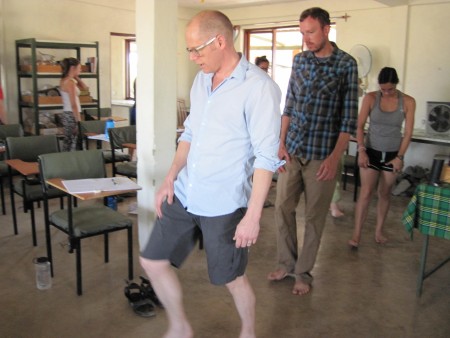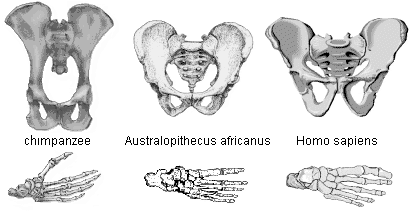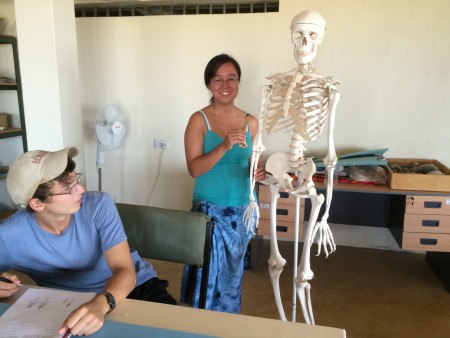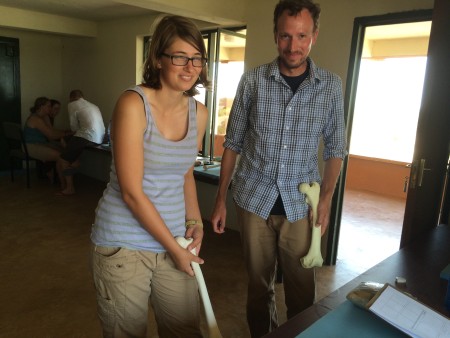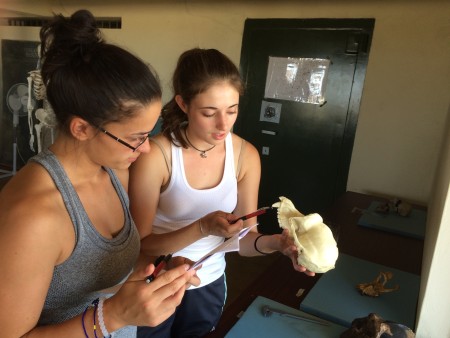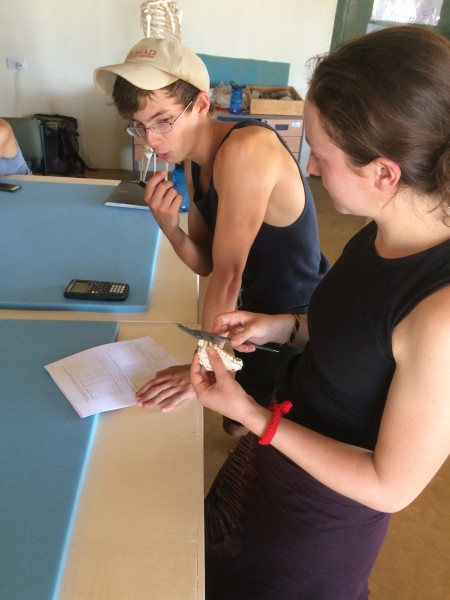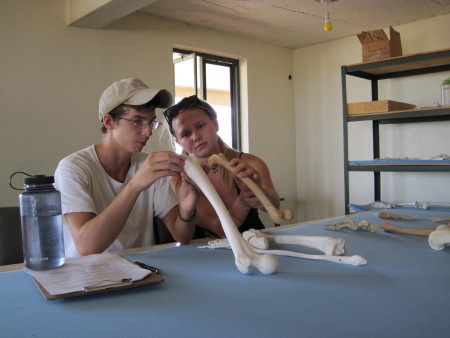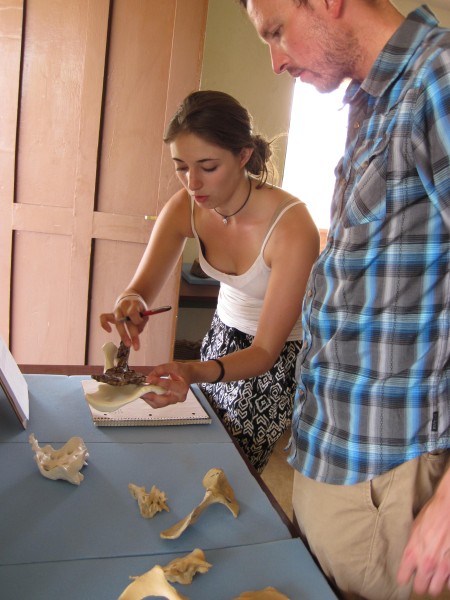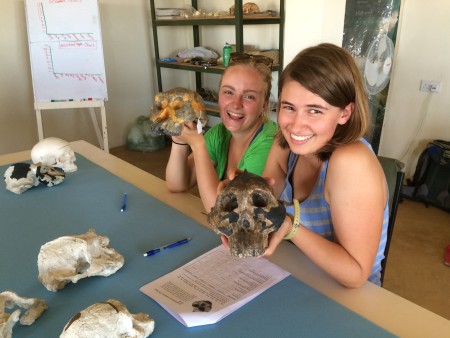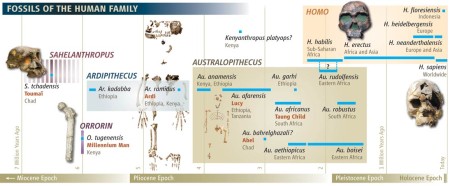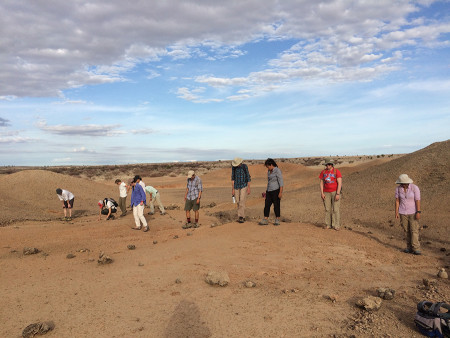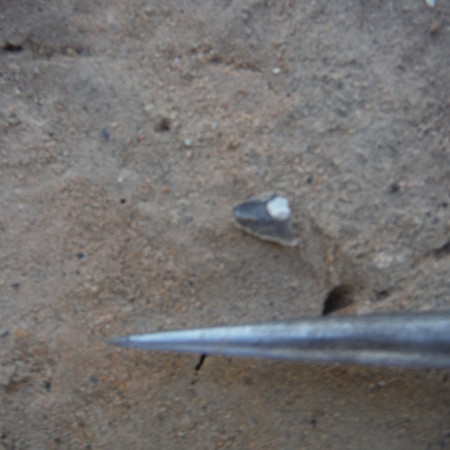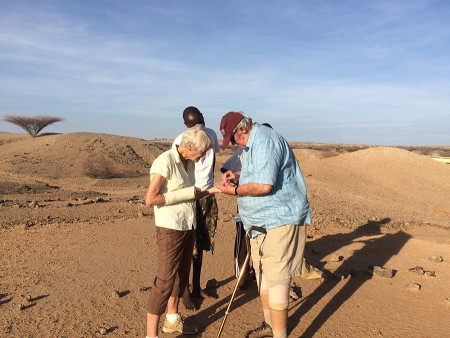As students began their study of hominins and the evolution to bipedalism, they began their study by comparing and contrasting skeletal parts between modern humans, modern apes, and finally, our fossil ancestors. Below are pictures from students’ lab activity on parts of the skeleton of modern humans, apes, and fossil hominins.
There is still debate on whether our ancestors became bipedal from a terrestrial or arboreal ancestor and why (shift to savannah, hands to carry, threat, thermoregulation, etc.). Whatever the case, during the Late Miocene the earliest putative hominins appear in Chad, Kenya, and Ethiopia. The diagram below is a timeline showing the age and appearance of each hominin species and is our current understanding of human evolution. Another great diagram and interactive website is Human Family Tree from the Smithsonian.
In the Turkana Basin, fossils have been uncovered of Australopithecus anamensis Australopithecus afarensis, Kenyanthropus platypus, Paranthropus boisei, Homo habilis, Homo rudolfensis, Homo erectus, and Homo sapiens.
Visit to South Turkwel – Pliocene deposits
On our last day of field work, we explored the Pliocene deposits of South Turkwel. Here, fossils have been uncovered that belong to Australopithecus afarensis and A. africanus.

